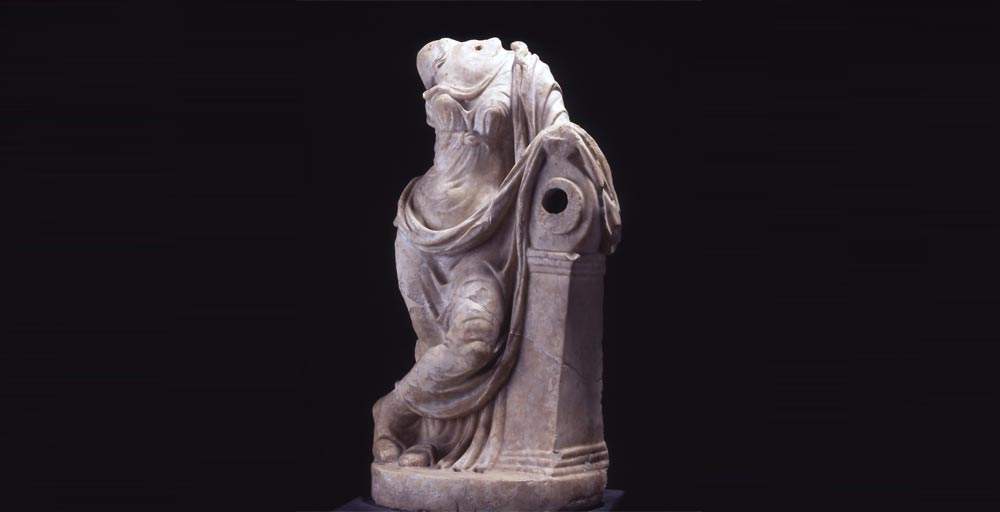Milan, the waterways of Mediolanum on display at the Civic Archaeological Museum
The exhibition illustrates the multiple uses and management systems of water in Milan in ancient times, highlighting how this resource marked its history and prosperity. Indeed, to the abundance of water Milan owes its origins, its urban development, the flourishing of many craft activities and the existence of monumental buildings made and embellished with precious materials and luxury goods from distant lands. The exhibition, which includes more than 300 largely unpublished artifacts, including everyday and valuable objects such as sculptures, jewelry, and frescoes, is accompanied by a rich graphic and photographic apparatus illustrating the progressive transformations of the city conducted in parallel with continuous works aimed at the administration of water resources. The itinerary thus aims to connect the ancient city and the modern metropolis, highlighting how the shrewd management of water resources and their exploitation for productive activities and trade have accompanied and determined the development of Milan from its origins (5th century B.C.) until today.
The exhibition itinerary
The exhibition traces the development of the city by following a chronological path from the earliest records relating to the control of water to the late imperial age, when Milan’s election as capital of the Roman Empire transformed the city with the construction of imposing public buildings, including the Terme Erculee, and the enlargement of the city walls and its moat.
Section II - A resource to be managed: water regulation in Mediolanum The careful management of water by the Roman administration is also evident from the virtuous channelization systems of which much evidence has been recorded in the city; widely spread in Mediolanum were wells to draw groundwater, present inside every private home. An extraordinary document on display in the exhibition is a portion of a wooden and lead hydraulic pump, recovered from the bottom of a Roman well, whose operating system is a testimony to the high level reached in hydraulic technology by the Romans.
Section III - Water and Production Activities in Milan The abundance of water played a fundamental role in the development of craft activities in the city throughout the Roman age. Alongside the production of ceramics, it was the working of metals, textiles and leather that brought prestige to the Milanese: exceptional is the discovery of a real tanning district that emerged in Piazza Meda during archaeological excavation activities prior to the construction of a parking lot (a virtual reconstruction included in the itinerary reconstructs the physiognomy of this plant).
Section IV - Water in Late Imperial Milan Among the ancient monumental buildings connected with the use and celebration of the beneficial virtues of water, the grandiose complex of the Terme Erculee built at the behest of Emperor Maximian at the end of the third century CE when Milan was chosen as an imperial residence stood out. The presentation of this imposing complex, to which originally belonged the colossal Torso of Hercules and a floor mosaic already part of the museum’s permanent tour, is supplemented with the display of additional materials and is accompanied by a virtual reconstruction of the tepidarium environment.
Section V - Water in Living Contexts In the Roman world, water also played a central role within private dwellings, both for strictly functional and service purposes and, in the case of the most prestigious residences, for recreational and ornamental purposes. The gardens of domus belonging to wealthy families were often enriched with fountains, pools, sculptures and other marble furnishings useful for enjoying the pleasures of water, embellishing the rooms and exhibiting private luxury.
Section VI - Sacredness of Water The function of water as an instrument of purification widespread in the pagan world and later inherited by Christianity determined its wide use in rituals, including funerary ones. The presence of waterways in the vicinity of many Milanese necropolises probably responds to needs of different kinds, from the desire to delimit funerary areas to the need to have running water for death rituals. This section displays some grave goods recovered from the necropolises that surrounded the city.
Section VII - Water after Mediolanum The itinerary concludes with a timeline that highlights, through the reproduction of important documentary sources (plans, drawings, paintings, photographs), the progressive transformation of the city’s hydrographic network, from the development of the navigable canals-which for centuries were an integral part of Milan’s landscape-until their disappearance underground of the city.
The exhibition, also enriched by MM spa’s contribution regarding water management today, is accompanied by a catalog published by Nomos editions, thanks to funding from UNIC-Lineapelle.
“This valuable exhibition,” said Culture Councillor Tommaso Sacchi, “offers an opportunity to delve into the history of our city and reflect on the centrality of water between past and present.” Through the archaeological evidence on display, it is possible to retrace the crucial stages that shaped Milan in order to better understand its origins and fortunes; at the same time, the exhibition invites us to look to the future and think about how to build a more sustainable Milan that is attentive to its resources."
 |
| Milan, the waterways of Mediolanum on display at the Civic Archaeological Museum |
Warning: the translation into English of the original Italian article was created using automatic tools. We undertake to review all articles, but we do not guarantee the total absence of inaccuracies in the translation due to the program. You can find the original by clicking on the ITA button. If you find any mistake,please contact us.



























